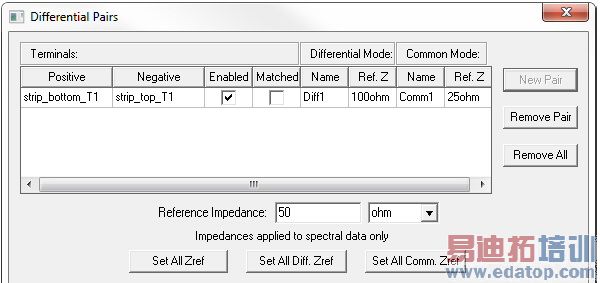- 易迪拓培训,专注于微波、射频、天线设计工程师的培养
HFSS15: Differential Pairs in HFSS Transient Network
For post process calculation of differential pairs in Transient Network problems, you can assign differential pairs in spectral terminal problems for transient designs. For Transient Composite Excitation problems differential pairs are not supported.
In Transient Network, you can solve the single-ended matched terminal problem. HFSS Transient uses the same post processing algorithms that HFSS uses to compute the differential and common modes for spectral values. In addition, a separate algorithm computes the differential pairs values for transient data. You can switch between single-ended and differential views of both spectral and transient data. Renormalization of spectral data is supported, but renormalization does not apply to transient data.
The dialog for transient Differential pairs is slightly different than for HFSS. The dialog includes columns for Enabled and Matched, rather than Active. Passive ports are not shown in the diff pairs setup dialog.

A checkbox for “Matched” for each differential pair indicates whether to use matched or differential and common impedances. This Matched checkbox also appears in driven terminal designs and uses the same postprocessing semantics. The transient solver uses the Matched value when the Design setting "Apply when solving" is selected.


